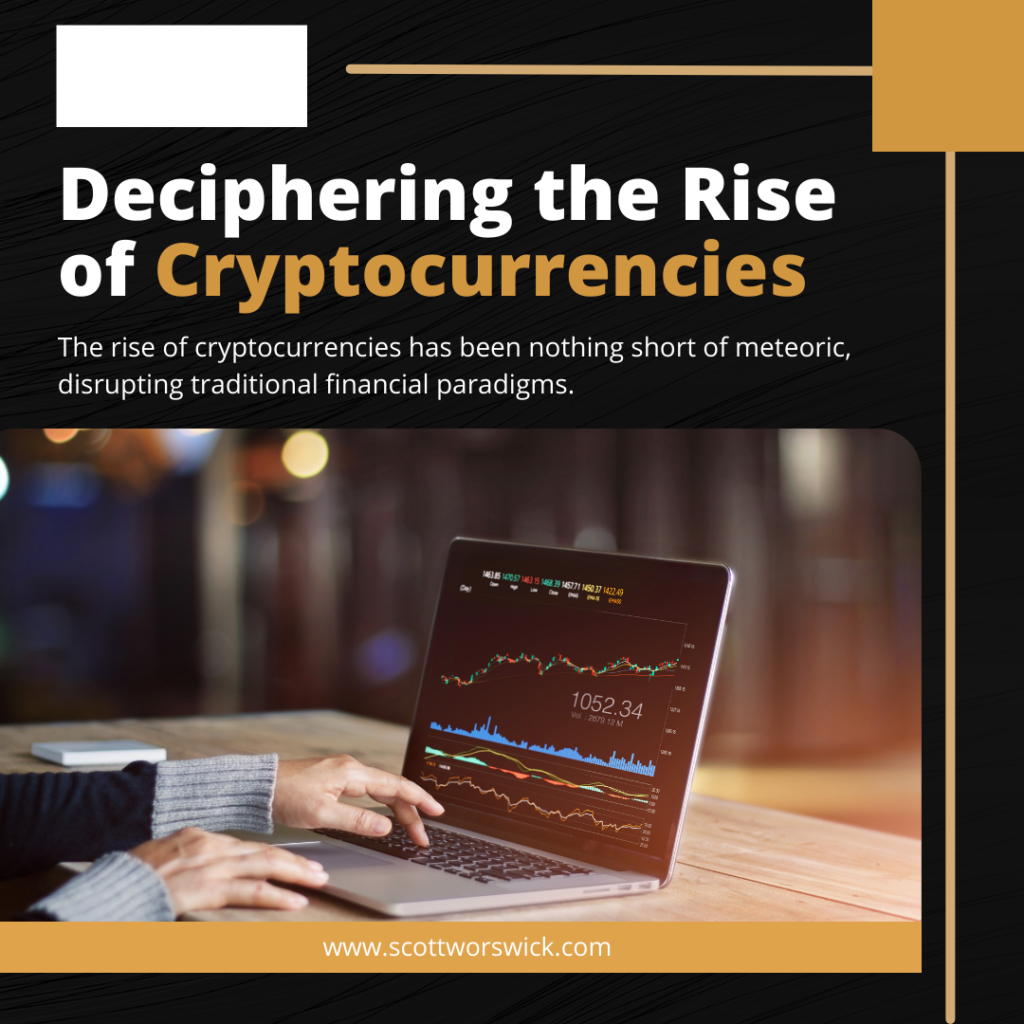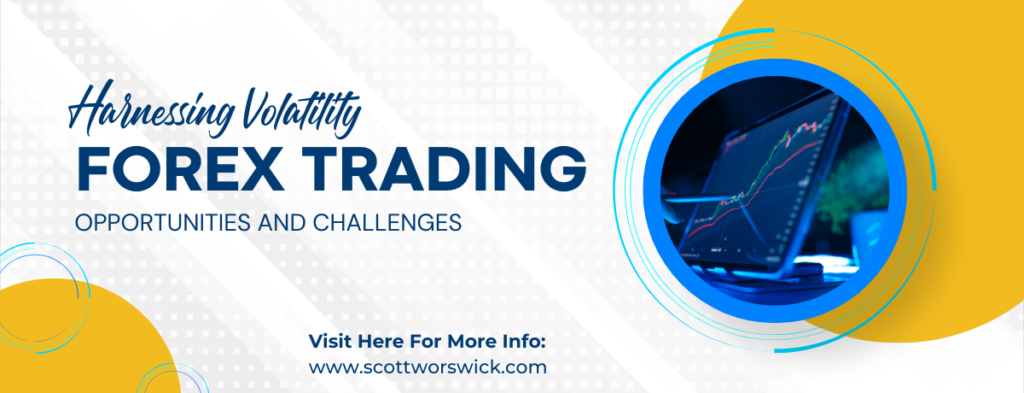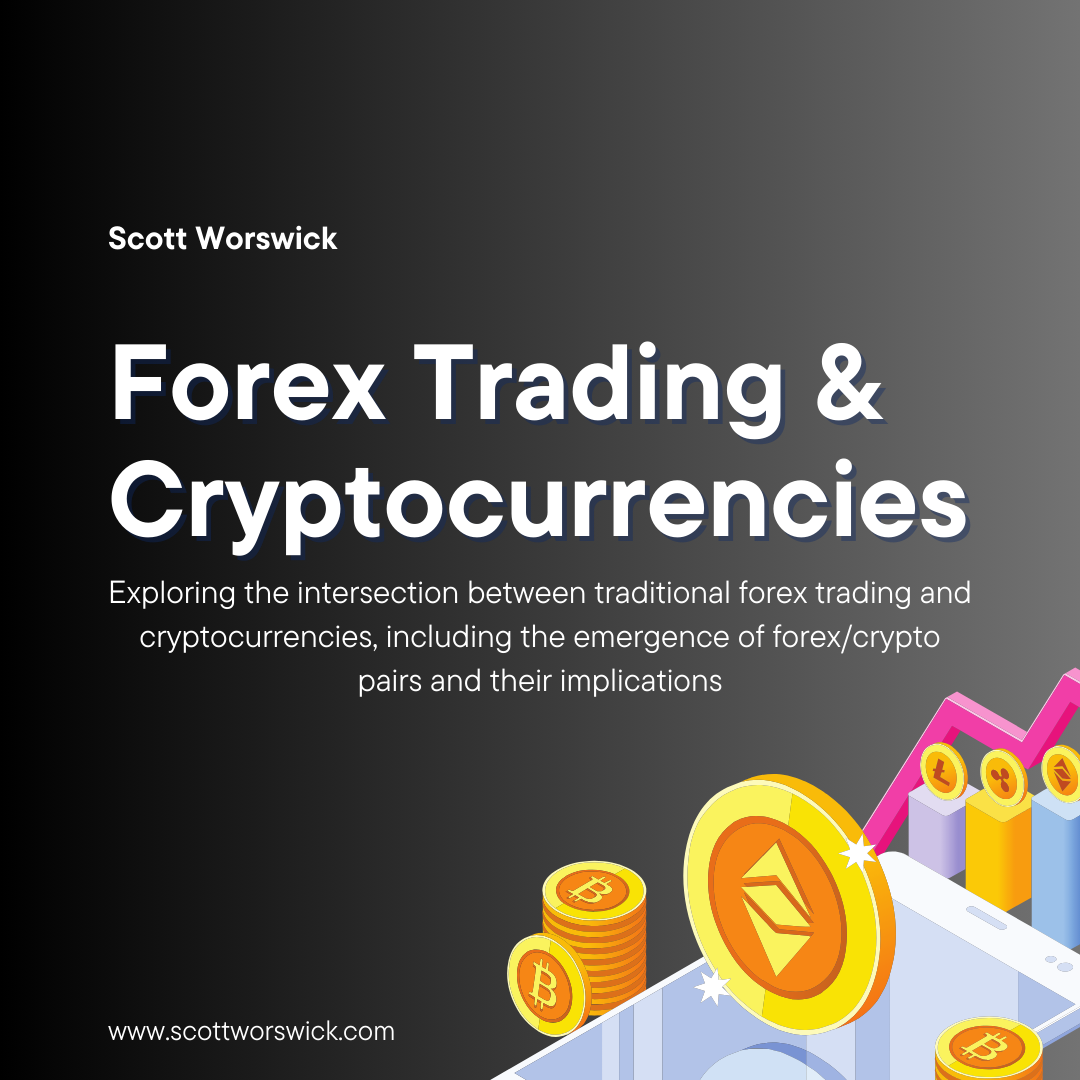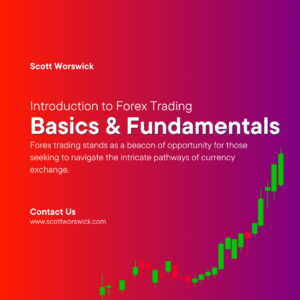In the dynamic realm of global finance, a fascinating convergence has emerged, igniting the imaginations of traders worldwide. This convergence marks the intersection between traditional forex trading and the disruptive force of cryptocurrencies, unveiling a new paradigm that promises both opportunity and challenge. As we delve into this intricate landscape, we embark on a journey to explore the emergence of forex/crypto pairs and the profound implications they bring to the forefront of financial markets.
Cryptocurrencies, born out of the innovative fervor of the digital age, have revolutionized the way we perceive and interact with money. Spearheaded by the iconic Bitcoin, cryptocurrencies offer decentralization, transparency, and a decentralized ledger technology known as blockchain. Their rapid proliferation has captured the attention of both retail and institutional investors, carving out a niche in the financial ecosystem that challenges the dominance of traditional fiat currencies.
Meanwhile, forex trading stands as a stalwart pillar in the realm of global finance, facilitating the exchange of currencies across borders with unparalleled liquidity and accessibility. Yet, the emergence of cryptocurrencies has introduced a new dimension to this established market, reshaping its dynamics in unforeseen ways. This fusion of traditional forex trading and cryptocurrencies has led to the emergence of hybrid pairs, where fiat currencies are paired with popular digital assets, opening up a new frontier for traders to explore and navigate.
Table of Contents
1. Understanding Forex Trading’s Influence
In the ever-evolving landscape of global finance, the influence of forex trading is undeniable, shaping the dynamics of markets worldwide. Forex trading stands as a beacon of liquidity and accessibility, offering traders the opportunity to engage in the exchange of fiat currencies across borders with ease. Its influence transcends geographical boundaries, providing a platform for participants to capitalize on currency fluctuations driven by economic indicators, geopolitical events, and central bank policies. Within this realm, traders hone their skills, employing various strategies to navigate the complexities of the forex market and seize opportunities for profit.
Moreover, forex trading serves as a catalyst for economic growth and stability, facilitating international trade and investment flows. As the cornerstone of the global financial system, it plays a pivotal role in establishing exchange rates and ensuring price stability. Central banks and governments closely monitor forex markets, intervening when necessary to maintain equilibrium and preserve macroeconomic stability. The influence of forex trading extends beyond speculative endeavors, contributing to the efficient allocation of resources and fostering economic development on a global scale.
Furthermore, the influence of forex trading extends into the realm of cryptocurrencies, ushering in a new era of convergence and innovation. The emergence of forex/crypto pairs marks a significant development, bridging the gap between traditional fiat currencies and digital assets. Traders now have the opportunity to diversify their portfolios and capitalize on the volatility of both markets within a single trading platform. As forex trading intersects with the burgeoning world of cryptocurrencies, it catalyzes technological innovation and drives the evolution of financial markets, shaping the future of trading in profound ways.
2. Deciphering the Rise of Cryptocurrencies

The rise of cryptocurrencies has been nothing short of meteoric, disrupting traditional financial paradigms and captivating the imaginations of investors worldwide. Spearheaded by the groundbreaking emergence of Bitcoin in 2009, cryptocurrencies have evolved into a diverse ecosystem of digital assets, each with its unique value proposition and use case. With their promise of decentralization, transparency, and borderless transactions, cryptocurrencies have transcended mere speculation to become a cornerstone of the digital economy. As the world increasingly embraces digitalization, the rise of cryptocurrencies represents a seismic shift in how we perceive and interact with money, challenging the hegemony of fiat currencies and reshaping the future of finance.
Beyond their monetary value, cryptocurrencies embody a philosophy rooted in decentralization and empowerment, offering individuals unprecedented control over their financial assets and personal data. Unlike traditional fiat currencies, which are subject to the whims of central banks and governments, cryptocurrencies operate on decentralized networks powered by blockchain technology. This democratization of finance has fostered a global community of innovators, entrepreneurs, and enthusiasts committed to revolutionizing the way we transact, invest, and store value. As the rise of cryptocurrencies continues unabated, it catalyzes a paradigm shift in how we conceptualize wealth, ownership, and financial sovereignty, heralding a new era of economic empowerment and inclusion.
Moreover, the rise of cryptocurrencies has sparked a wave of innovation and experimentation, driving the development of new financial instruments and market infrastructure. From decentralized finance (DeFi) platforms to non-fungible tokens (NFTs), the cryptocurrency ecosystem is a hotbed of creativity and ingenuity, pushing the boundaries of what is possible in the digital age. This wave of innovation extends into the intersection with forex trading, where the emergence of forex/crypto pairs opens up new avenues for traders to explore and capitalize on market opportunities. As traditional forex trading converges with the world of cryptocurrencies, it catalyzes a symbiotic relationship that fosters liquidity, price discovery, and innovation, shaping the future of financial markets in unprecedented ways.
3. Fusion Unveiled: Forex/Crypto Pairs
The fusion of traditional forex trading and cryptocurrencies has unveiled a new frontier of opportunities for traders, marked by the emergence of forex/crypto pairs. These hybrid pairs bridge the gap between fiat currencies and digital assets, allowing traders to capitalize on the volatility and liquidity of both markets within a single trading platform. From BTC/USD to EUR/ETH, forex/crypto pairs offer unparalleled diversity and flexibility, empowering traders to tailor their strategies to the ever-changing dynamics of global finance. As this fusion unfolds, it catalyzes a convergence of traditional and digital economies, reshaping the landscape of financial markets in profound ways.
Moreover, forex/crypto pairs serve as a catalyst for innovation and market efficiency, driving the development of new trading instruments and strategies. With the availability of these hybrid pairs, traders gain exposure to a broader range of assets and market dynamics, fostering greater liquidity and price discovery. The intersection between traditional forex trading and cryptocurrencies sparks a symbiotic relationship that fuels technological advancements and fosters collaboration across disparate sectors of the financial industry. As traders embrace this fusion, they unlock new avenues for diversification and risk management, ushering in a new era of trading possibilities.
Furthermore, the implications of forex/crypto pairs extend beyond the realm of trading, influencing the broader landscape of global finance and economic development. As traditional fiat currencies and digital assets converge, they catalyze cross-border transactions, investment flows, and capital allocation on a global scale. This convergence paves the way for greater financial inclusion and innovation, empowering individuals and businesses to participate in the digital economy with unprecedented ease and efficiency. As forex trading intersects with the world of cryptocurrencies through these hybrid pairs, it propels the evolution of financial markets towards a more interconnected, resilient, and inclusive future.
4. Exploring Market Dynamics and Implications
The convergence between traditional forex trading and cryptocurrencies brings forth a dynamic fusion of market dynamics and implications, reshaping the landscape of global finance. At the heart of this convergence lies the emergence of forex/crypto pairs, where traditional fiat currencies are paired with popular digital assets. This integration introduces a new layer of complexity to trading strategies, as traders navigate the unique volatility and liquidity profiles of both traditional and digital markets within a single platform. The interaction between these two distinct asset classes fuels price discovery and market efficiency, offering traders unprecedented opportunities for diversification and risk management.
Furthermore, the emergence of forex/crypto pairs amplifies market dynamics, creating a symbiotic relationship between traditional and digital currencies. As traders delve into these hybrid pairs, they contribute to greater liquidity and depth in both forex and cryptocurrency markets. This heightened liquidity not only facilitates smoother price movements but also fosters increased market participation from retail and institutional investors alike. Moreover, the convergence between traditional forex trading and cryptocurrencies accelerates the pace of technological innovation in trading platforms and infrastructure, as market participants adapt to the evolving demands of this dynamic landscape.
The implications of this convergence extend beyond trading strategies to encompass broader trends in global finance and economic development. As forex trading intersects with the world of cryptocurrencies, it catalyzes cross-border transactions and investment flows, bridging the gap between traditional financial systems and the digital economy. This integration fosters greater financial inclusion and accessibility, empowering individuals and businesses to participate in the global economy with reduced barriers to entry. Moreover, the convergence between forex trading and cryptocurrencies stimulates regulatory discourse and compliance considerations, as authorities seek to adapt existing frameworks to encompass this evolving landscape while safeguarding investor protection and market integrity.
In conclusion, exploring the market dynamics and implications of the intersection between traditional forex trading and cryptocurrencies unveils a wealth of opportunities and challenges for traders and market participants alike. As forex/crypto pairs continue to gain prominence, they catalyze innovation, liquidity, and efficiency in both traditional and digital markets, shaping the future of finance in profound ways. Whether navigating volatility, harnessing technological advancements, or embracing regulatory changes, market participants must adapt to the evolving dynamics of this dynamic convergence to thrive in the ever-changing landscape of global finance.
5. Harnessing Volatility: Opportunities and Challenges

Volatility stands as both a beacon of opportunity and a source of challenge in the realm of forex trading and cryptocurrencies, especially within the emerging domain of forex/crypto pairs. The inherent volatility of these markets presents traders with the potential for substantial gains, as price movements offer opportunities for profit generation through strategic trading decisions. However, alongside these opportunities come significant challenges, as heightened volatility amplifies the risk of substantial losses if not managed effectively. Successful traders must navigate this delicate balance, harnessing volatility to their advantage while implementing robust risk management strategies to mitigate potential downsides.
Moreover, the fusion of traditional forex trading and cryptocurrencies introduces a unique blend of volatility, as traders grapple with the dynamics of both fiat and digital markets within a single trading platform. The volatility of cryptocurrencies, characterized by sharp price fluctuations driven by factors such as market sentiment and technological developments, adds a layer of complexity to trading strategies. As traders seek to capitalize on these market dynamics, they must remain vigilant, adapting their approaches to navigate the intricacies of hybrid forex/crypto pairs effectively. This fusion of volatility poses both opportunities and challenges, requiring traders to stay agile and proactive in their decision-making processes.
Furthermore, the convergence between traditional forex trading and cryptocurrencies heightens the importance of risk management practices, as traders contend with increased uncertainty and market fluctuations. Effective risk management strategies, such as setting stop-loss orders, diversifying portfolios, and employing proper position sizing techniques, are essential for mitigating potential losses and preserving capital in volatile trading environments. Additionally, traders must remain disciplined in their execution, adhering to predefined trading plans and strategies to minimize emotional biases and impulsive decision-making. By harnessing volatility while maintaining prudent risk management practices, traders can navigate the complexities of hybrid forex/crypto pairs with confidence and resilience, positioning themselves for long-term success in the evolving landscape of global finance.
6. Regulatory Landscape and Compliance Considerations
As the intersection between traditional forex trading and cryptocurrencies continues to evolve, market participants are increasingly confronted with a complex regulatory landscape that spans multiple jurisdictions. Regulatory authorities worldwide are grappling with the need to adapt existing frameworks to encompass the unique challenges and opportunities presented by the convergence of these two distinct asset classes. From anti-money laundering (AML) regulations to investor protection measures, the regulatory landscape surrounding forex/crypto pairs is multifaceted and constantly evolving. Traders must navigate this intricate web of regulations with diligence and caution, ensuring compliance with applicable laws and regulations to mitigate legal risks and safeguard market integrity.
Moreover, the regulatory landscape governing forex trading and cryptocurrencies intersects at various points, creating potential areas of overlap and ambiguity. While traditional forex markets are subject to established regulatory frameworks enforced by central banks and financial regulatory authorities, the decentralized nature of cryptocurrencies introduces additional complexities. Regulatory oversight of cryptocurrency exchanges and trading platforms varies significantly from one jurisdiction to another, with some countries embracing innovation while others adopt a more cautious approach. This patchwork of regulations underscores the need for market participants to remain informed and proactive in their compliance efforts, lest they run afoul of regulatory requirements and face potential legal consequences.
Furthermore, compliance considerations extend beyond regulatory mandates to encompass broader ethical and social responsibilities within the financial ecosystem. Market participants must adhere to principles of transparency, integrity, and ethical conduct in their dealings, fostering trust and confidence among investors and stakeholders. Additionally, as the regulatory landscape evolves, traders must stay abreast of emerging trends and best practices in compliance to ensure their operations remain aligned with industry standards and expectations. By prioritizing compliance and ethical conduct, traders can uphold the integrity of the forex/crypto markets and contribute to the long-term sustainability and legitimacy of the financial ecosystem.
7. Technological Innovation and Trading Platforms
The convergence of traditional forex trading and cryptocurrencies has spurred a wave of technological innovation in trading platforms, revolutionizing the way traders engage with financial markets. From specialized forex brokers offering crypto trading capabilities to dedicated cryptocurrency exchanges integrating forex/crypto pairs, the market has witnessed a proliferation of platforms catering to the diverse needs of traders. These innovative platforms leverage cutting-edge technologies such as blockchain, artificial intelligence, and advanced analytics to provide traders with seamless access to a wide range of trading instruments and functionalities. As a result, traders can capitalize on market opportunities with unprecedented speed, efficiency, and precision, empowering them to stay ahead of the curve in an increasingly competitive landscape.
Moreover, technological innovation in trading platforms extends beyond mere functionality to encompass user experience and accessibility. Intuitive interfaces, customizable dashboards, and mobile trading applications enable traders to execute trades and monitor market developments on the go, ensuring maximum flexibility and convenience. Additionally, the integration of social trading features and community forums fosters collaboration and knowledge sharing among traders, facilitating the exchange of insights, strategies, and best practices. By leveraging technology to enhance user experience and engagement, trading platforms empower traders to make informed decisions and navigate the complexities of forex/crypto markets with confidence and ease.
Furthermore, the intersection between traditional forex trading and cryptocurrencies has catalyzed the development of advanced tools and analytics to aid traders in their decision-making processes. From real-time market data feeds to algorithmic trading strategies, these technological innovations provide traders with unparalleled insights into market trends and dynamics. By harnessing the power of big data and machine learning, traders can identify patterns, correlations, and anomalies in market behavior, enabling them to optimize their trading strategies and maximize returns. As technological innovation continues to drive the evolution of trading platforms, traders can expect even greater advancements in the years to come, ushering in a new era of efficiency, transparency, and opportunity in the forex/crypto markets.
8. The Future of Trading: Embracing Change and Adaptation
As the convergence between traditional forex trading and cryptocurrencies continues to reshape the landscape of global finance, traders must embrace change and adaptation to thrive in this dynamic environment. The fusion of forex trading with the disruptive force of cryptocurrencies marks the beginning of a new era in trading, characterized by unprecedented opportunities for innovation and growth. By staying abreast of emerging trends, technological advancements, and regulatory developments, traders can position themselves at the forefront of this transformative shift, leveraging the synergies between traditional and digital markets to capitalize on market opportunities and navigate challenges with agility and resilience.
Furthermore, the future of trading lies in the ability of traders to embrace innovation and leverage technology to their advantage. From algorithmic trading strategies to advanced analytics and machine learning algorithms, technological innovation holds the key to unlocking new avenues for profit generation and risk management in the forex/crypto markets. By harnessing the power of data-driven insights and automation, traders can optimize their trading strategies, mitigate downside risks, and stay ahead of market trends with unparalleled precision and efficiency. As technological innovation continues to accelerate, traders must adopt a mindset of continuous learning and adaptation, embracing new tools and methodologies to remain competitive in an ever-evolving landscape.
Moreover, the future of trading hinges on the ability of market participants to foster collaboration and knowledge sharing across disparate sectors of the financial industry. By cultivating a culture of openness, transparency, and collaboration, traders can collectively drive innovation, efficiency, and integrity in the forex/crypto markets. From sharing best practices and insights to collaborating on research and development initiatives, traders can leverage the collective wisdom of the community to solve complex challenges, seize emerging opportunities, and shape the future of trading for the benefit of all stakeholders. As the intersection between traditional forex trading and cryptocurrencies continues to evolve, traders must embrace change and adaptation as catalysts for growth and progress, paving the way for a more resilient, inclusive, and sustainable future of finance.
Conclusion
In conclusion, the intersection between traditional forex trading and cryptocurrencies heralds a new dawn in the world of finance, characterized by innovation, opportunity, and adaptation. The emergence of forex/crypto pairs bridges the gap between traditional fiat currencies and digital assets, unlocking new avenues for diversification, risk management, and profit generation for traders worldwide. This convergence sparks a symbiotic relationship that fuels technological innovation, market efficiency, and regulatory discourse, shaping the future of trading in profound ways.
As we navigate this dynamic landscape, it becomes evident that the future of trading lies in embracing change and adaptation. Traders must remain agile and proactive in their approach, leveraging technological advancements, regulatory developments, and market trends to their advantage. By cultivating a culture of collaboration, transparency, and continuous learning, traders can navigate the complexities of the forex/crypto markets with confidence and resilience, positioning themselves for success in an ever-evolving financial ecosystem.
Moreover, the convergence between traditional forex trading and cryptocurrencies underscores the transformative power of innovation in driving progress and prosperity. As traders harness the synergies between traditional and digital markets, they pave the way for a more inclusive, efficient, and sustainable future of finance. By embracing the opportunities presented by this convergence and mitigating the challenges it brings, traders can contribute to the evolution of financial markets, shaping a world where access to opportunities and financial empowerment knows no bounds.





Pingback: The Importance of Forex Education in the Digital Age: Highlighting the significance of continuous education and skill development for forex traders in navigating the complexities of the digital forex market -
Pingback: Introduction to Forex Trading: Basics and Fundamentals -
Pingback: Introduction to Forex Trading: Basics and Fundamentals – INFINITY DOWNLINE BUILDER